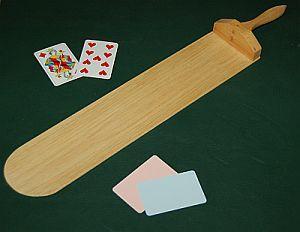Baccarat game rules explanation
Baccarat, also known as Punto Banco (which is in fact a game variation of Baccarat), is an exciting, but at the same time fairly simple, casino game. You don’t really have to do anything, except placing your bet on one of three options; Bank, Player, or Tie. We will explain the baccarat rules in detail on this page. After you’ve studied the rules, you can find tips on how to play baccarat at our baccarat strategy and tips pages.
What is baccarat or punto banco?
In most casinos, the game played at the Baccarat tables is Punto Banco. We will therefore explain the rules of Punto Banco.
To start off, the goal in baccarat is to get more points than your opponent; the dealer or groupier. The highest number of points you can get is nine. Fun fact about baccarat is that it’s named after the worst hand you can get, which is 0. As opposed to blackjack, the game gets it’s name from the worst possible option, instead of the best.
In Baccarat, players can bet on three options: player, banker, or tie. It’s important to know that a player can bet on banker. Banker is in this case not the dealer or the casino, just the name for one of two hands.
Baccarat / Punto Banco game process

- Cards are dealt, with the image facing down. First one to player, then one to banker. After that, a second card is dealt to the player, and a second to banker
- Then both cards from both hands are flipped and summed up
- The dealer will point out the total score of both hands
Baccarat rules; a third card or not?
At this point the Baccarat rules come into effect, to decide the next move: whether more cards will be dealt, based on the total score in both hands. Let's see what happens in the different options below:
- If the player or banker has a total of 8 or 9 in the first dealing round, no extra cards will be dealt, and the player with the highest score, wins. If none of the players has a score of 8 or 9, the game continues as follows;
- If the score of the player in the first round is between 0 and 5, the player gets another card. If the player has a total of 6 or 7, he passes and doesn’t get an extra card.
- The game of the banker depends on his hand: whether the player got another card, and the value of the card the other player was dealt;
- If the player hasn’t gotten another card, the banker will take another card if he has a total between 0 and 5, and passes if he has a total of 6 and 7.
- If the player has received a 2 or 3, the banker will get another card if he has a total between 0 and 4, and he’ll pass if he has a total of 5 to 7.
- If the player has received a 4 or 5, the banker will get another card if he has a total between 0 and 5, and he’ll pass if he has a total of 6 to 7.
- If the player has received a 6 or 7, the banker will get another card if he has a total between 0 and 6, and he’ll pass if he has total of 7.
- If the player has received an 8, the banker will get another card if he has a total between 0 and 2, and he’ll pass if he has a 6 to 7.
- If the player has received an ace, another image, 9 or 10, the banker will flip a card if he has a total score from 0 to 3 and he’ll pass if he has a score from 4 to 7.
Read the baccarat rules, now what?
As we stated before: baccarat rules are simple. So, does it all come down to luck? Well, yes and no. The trick is to place your bet in the best possible way. Learn more on baccarat strategy!